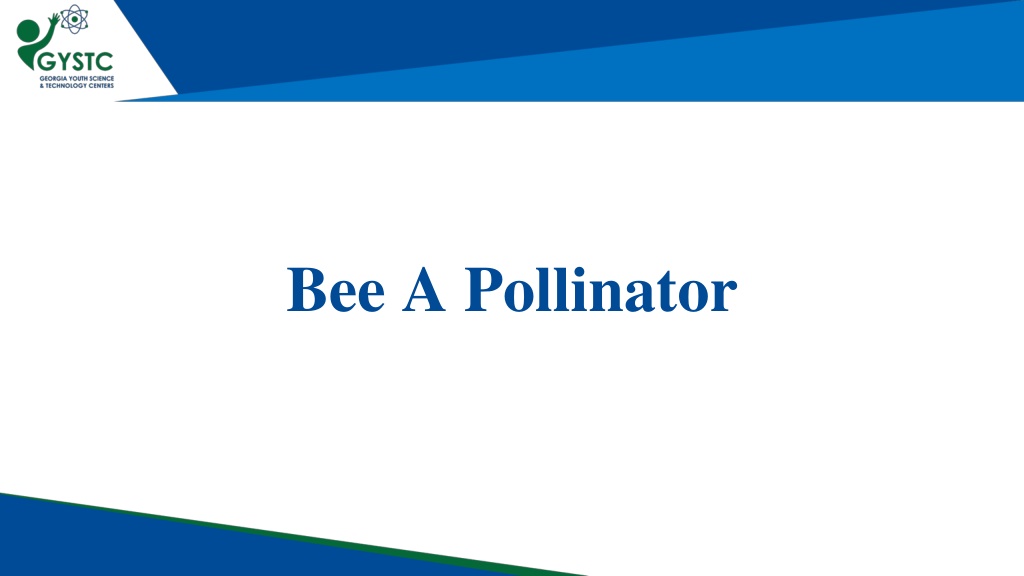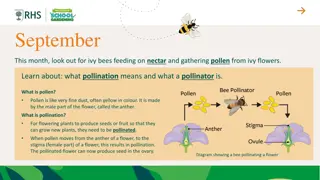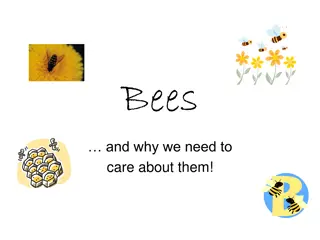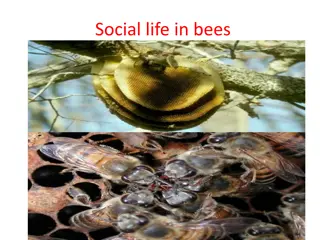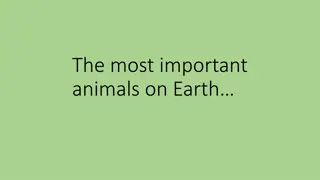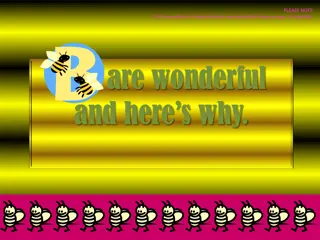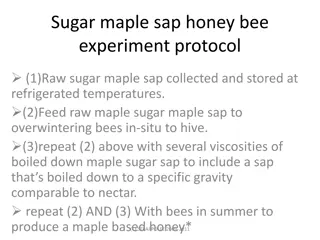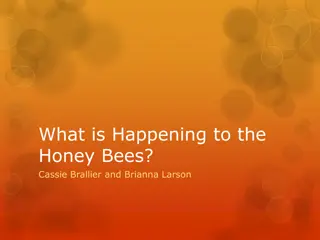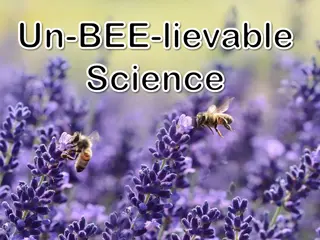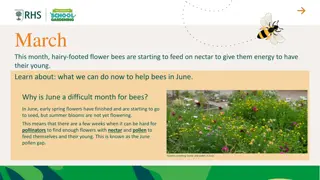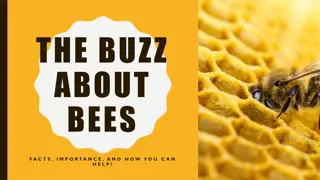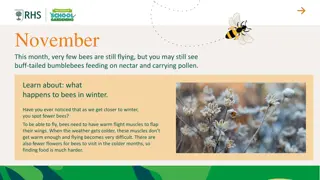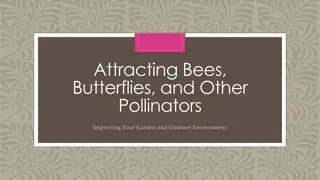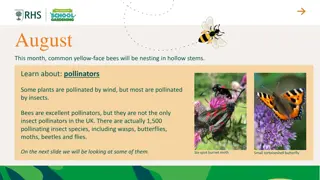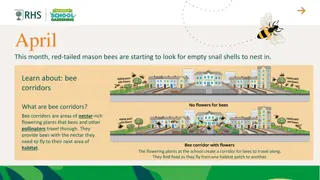Understanding the Importance of Bees as Pollinators in Ecosystems
Explore the vital role of bees in pollination through hands-on activities, educational videos, and discussions. Learn about the decline of honeybee populations and delve into innovative solutions like robotic pollinators. Engage in STEM challenges to redesign bee-like robots for effective pollination. Discover how pollination is crucial for plant reproduction and ecosystem health.
Download Presentation

Please find below an Image/Link to download the presentation.
The content on the website is provided AS IS for your information and personal use only. It may not be sold, licensed, or shared on other websites without obtaining consent from the author. Download presentation by click this link. If you encounter any issues during the download, it is possible that the publisher has removed the file from their server.
E N D
Presentation Transcript
Standard S2L1: Obtain, evaluate, and communicate information about the life cycles of different organisms. c. Develop a simple model that depicts an animal s role in dispersing seeds or in the pollination of plants.
Engage https://www.youtube.com/watch ?v=YZXcksB-Iks
Explore: Build A Bee Cut out your bee. Add the three sets of legs by pushing the pipe cleaners through the paper.
Explore: Set Up your Flowers Spread out your two muffin cup liners. One will have powdered sugar and the other will have cocoa powder. Let your bee visit one flower and then the other flower . Make observations.
What is Pollination? Pollination is the transfer of pollen from one flower to another (or the same flower). This allows the plant to make more plants.
Bees Help with Pollination Bee CAM
The Honeybee All fruits and vegetables need some form of pollination to reproduce or make more. The honeybee is one of the main pollinators in the animal kingdom. 30% of pollination is from honeybees. However, the honeybee population has been declining by 30-50% in the US.
Elaborate: STEM Challenge The Robotic Honeybee With the decline of the honeybee population, the robotic honeybee may be a way to aid in pollination. Today, you will be an engineer and redesign you honeybee to make it a better pollinator! https://wyss.harvard.edu/technology/robobees-autonomous-flying-microrobots/
Test Your Honeybee Did it work better? If it didn t work as planned, what could you do next time to make it better?
STEM Career: Entomologist Entomologists study insects, such as ants, bees, and beetles. They also study arthropods, a related group of species that includes spiders and scorpions. Most entomologists specialize in a particular type of insect. Insects outnumber all other forms of life combined and perform functions vital to life on Earth. Consequently, entomologists make many important contributions to scientific knowledge, such as the best ways to pollinate crops, conserve insect species, and protect crops, trees, wildlife, and livestock from pests. Understanding the roles insects play in their environments can also help us restore disturbed ecosystems and clean up contaminated sites. Some entomologists study how climate change will affect insect species and their distributions. Some entry-level positions are open to candidates with bachelor's degrees in entomology or related scientific fields, such as biology. Entomology programs usually cover insect biology and physiology, pest management, insect-borne diseases, insect taxonomy and morphology, and veterinary entomology.
